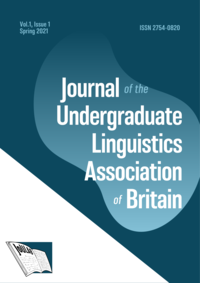The Graded Co-Salience Hypothesis for Polysemous Ambiguity
Abstract
It is well established in the theoretical (see Weinreich 1964) and empirical study (see Jastrzembski, 1981, Williams, 1992) of polysemy that its comprehension in context can lead to ambiguities arising. The present paper aims, by reviewing current literature and employing corpus methods, to determine whether the pragmatic theory of the Graded Salience Hypothesis (Giora, 1997; 2003) may be used outside of the original scope of its application to determine precisely why polysemes in context can beambiguous. Using data from the ARCHER 3.2 (2013) corpus to analyse frequency as an input factor to mental lexica structure (see Bybee, 2006;2010), 2,761 token instances of nine polysemes — ‘hand’, ‘head’, ‘door’, ‘once’, ‘book’, ‘run’, ‘cut’, ‘stop’, and ‘court’ — are manually tagged in a semantic decision task (from Glynn, 2016) as being either of a particular sense, or ambiguous(based on the biasing/priming effects of their context). It is found that significant incidences of polysemous ambiguity can be explained as a function of the plurality of salient senses per lexical item, among other observable characteristics. The hypothesis this paper brings is that polysemous ambiguity might be explained, following further research, with reference to the Graded Salience Hypothesis; that it may be the result of the co-activation of co-salient senses: the Graded Co-Salience Hypothesis.

Published
Issue
Volume 1 (Issue 1)DOI
URL
Permalink
- This work is licensed under a Creative Commons Attribution 4.0 International License.
